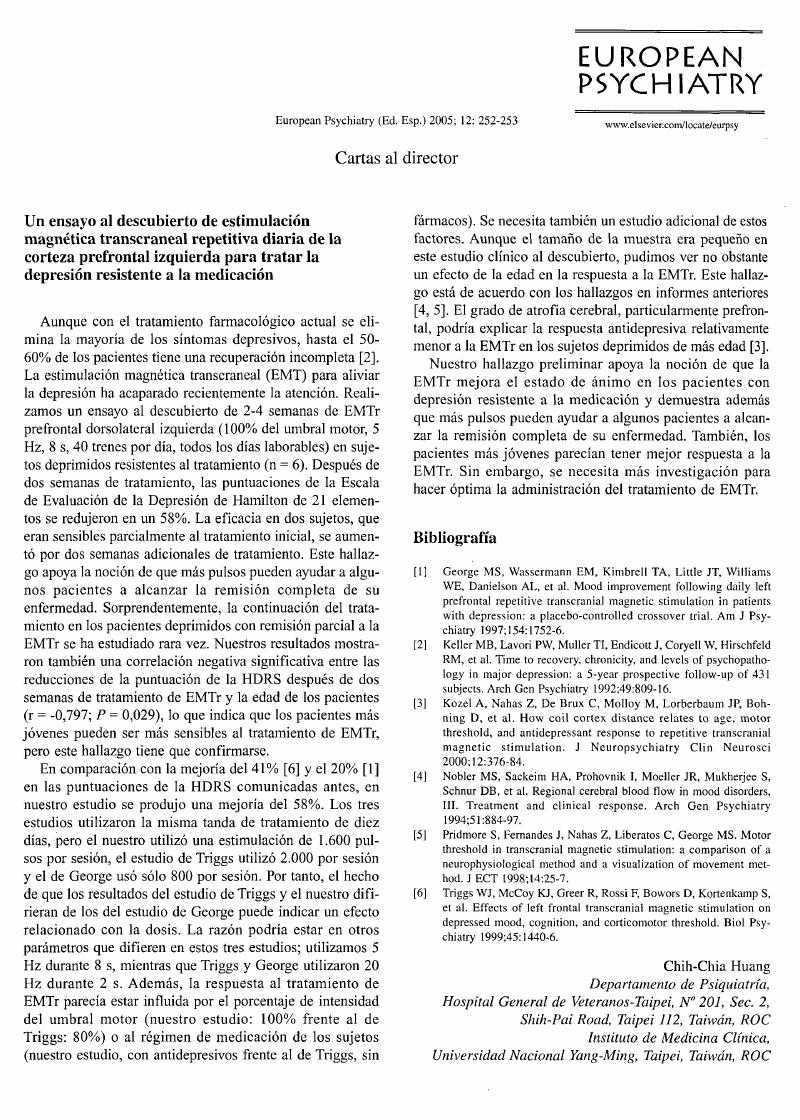No CrossRef data available.
Article contents
Un ensayo al descubierto de estimulación magnética transcraneal repetitiva diaria de la corteza prefrontal izquierda para tratar la depresión resistente a la medicación
Published online by Cambridge University Press: 12 May 2020
Abstract
An abstract is not available for this content so a preview has been provided. As you have access to this content, a full PDF is available via the ‘Save PDF’ action button.

- Type
- Cartas Al director
- Information
- Copyright
- Copyright © European Psychiatric Association 2005
References
Bibliografía
[1]George, MSWassermann, EMKimbrell, TALittle, JTWilliams, WEDanielson, AL, et al. Mood improvement following daily left prefrontal repetitive transcranial magnetic stimulation in patients with depression: a placebo-controlled crossover trial. Am J Psychiatry 1997; 154: 1752-6.CrossRefGoogle ScholarPubMed
[2]Keller, MBLavori, PWMuller, TIEndicott, JCoryell, WHirschfeld, RM, et al. Time to recovery, chronicity, and levels of psychopathology in major depression: a 5-year prospective follow-up of 431 subjects. Arch Gen Psychiatry 1992; 49: 809-16.CrossRefGoogle ScholarPubMed
[3]Kozel, ANahas, Z, De Brux C, Molloy M, Lorberbaum JP, Bohning D, et al. How coil cortex distance relates to age, motor threshold, and antidepressant response to repetitive transcranial magnetic stimulation. J Neuropsychiatry Clin Neurosci 2000; 12: 376-84.CrossRefGoogle ScholarPubMed
[4]Nobler, MSSackeim, HAProhovnik, IMoeller, JRMukherjee, SSchnur, DB, et al. Regional cerebral blood flow in mood disorders, III. Treatment and clinical response. Arch Gen Psychiatry 1994; 51: 884-97.CrossRefGoogle ScholarPubMed
[5]Pridmore, SFemandes, JNahas, ZLiberatos, CGeorge, MS. Motor threshold in transcranial magnetic stimulation: a comparison of a neurophysiological method and a visualization of movement method. J ECT 1998; 14: 25-7.CrossRefGoogle Scholar
[6]Triggs, WJMcCoy, KJGreer, RRossi, FBowors, DKortenkamp, S, et al. Effects of left frontal transcranial magnetic stimulation on depressed mood, cognition, and corticomotor threshold. Biol Psychiatry 1999; 45: 1440-6.CrossRefGoogle ScholarPubMed




